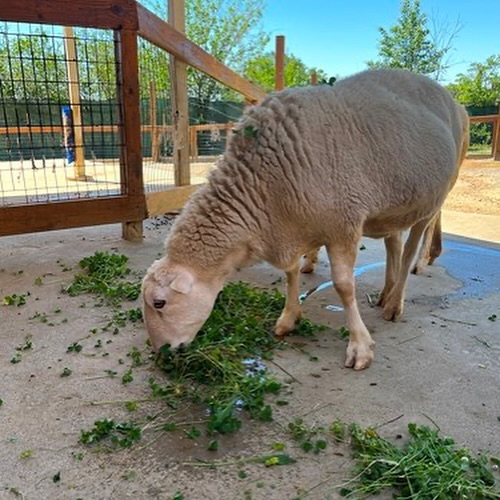- Understanding how Zoo animals adapt to winter conditions.
- Exploring the dietary and habitat adjustments necessary for animal well-being.
- Examining the Little Rock Zoo’s strategies for maintaining animal health during winter.
- Insight into the training and preparation of zoo staff for winter care.
- The role of conservation efforts in supporting wildlife during colder seasons.
As winter weather arrives, zoos face the annual challenge of caring for their diverse animal populations in varying climatic conditions. The Little Rock Zoo, known for its commitment to wildlife conservation and animal care, implements a comprehensive strategy to keep its residents healthy and comfortable during the colder months. Understanding how zoo animals adapt to winter conditions is crucial for ensuring their well-being and contributes to broader conservation efforts.
Animal Adaptation to Winter Conditions
Adapting to winter conditions is a natural part of life for many wild animals. In a zoo setting, however, environmental control is essential because animals might not naturally encounter cold weather in their native habitats. Certain species, like those from tropical climates, require special attention as they lack the innate ability to withstand colder temperatures. The Little Rock Zoo integrates scientific knowledge about each species’ biology and ecology to simulate their natural environments as closely as possible.
For example, animals possessing thick fur or layers of fat, such as polar bears and snow leopards, are naturally suited to withstand cold weather. Conversely, animals such as reptiles and amphibians, which are ectothermic, require heated habitats as their body temperature matches their surroundings. By adjusting temperature-controlled enclosures, the zoo provides species-specific environments that cater to the individual needs of each animal during winter months.
Dietary and Habitat Adjustments
One critical aspect of winter care for zoo animals is the adjustment of their diets. Many animals alter their food intake to cope with seasonal changes. For instance, some mammals increase caloric intake to build fat stores for insulation. In facilitating these dietary adjustments, zookeepers work closely with veterinarians and nutrition experts to develop appropriate feeding regimes. This ensures that all animals receive the nutrients they need, even as their energy requirements change with the onset of colder weather.
In addition to dietary changes, habitat modification is another essential component of winter care. The challenge is to recreate the conditions animals would naturally experience in the wild. Heated indoor enclosures, wind barriers, and additional bedding are just some of the measures employed to maintain suitable habitats. The design of these habitats takes into account both temperature control and the provision of enrichment activities to keep animals physically active and mentally stimulated throughout the winter.
Ensuring Health through Winter Strategies
The Little Rock Zoo employs specific strategies to monitor and maintain the health of its animals during winter. Regular health checks are intensified during this period to catch any early signs of illness that may arise due to decreased temperatures. Veterinary teams work diligently to track the health metrics and physical conditions of each animal, with a heightened focus on species more susceptible to respiratory problems and frostbite.
Moreover, routine behavior observations help caretakers detect any signs of distress or abnormal activity that might indicate health issues. Animals exhibiting unusual behaviors receive prompt attention, ensuring that any interventions occur swiftly to prevent serious health problems. By combining technological monitoring systems with experienced caretakers, the zoo ensures a high standard of health care throughout the winter months.
Training and Preparation for Staff
A successful winter care program requires not only prioritizing animal needs but also ensuring that zoo staff are prepared. Staff training programs at the Little Rock Zoo emphasize the importance of understanding seasonal behavioral changes and implementing appropriate care protocols. Training sessions include educating staff about the specific needs of animals during winter, emergency response procedures, and using weather-adaptive equipment.
Effective communication within zoo teams is crucial, particularly when managing unexpected winter challenges such as ice storms or power outages. Scenarios are practiced to teach effective problem-solving skills, ensuring that staff remain proactive and attentive to their responsibilities. Preparing and equipping staff minimizes potential risks and guarantees safe and effective management of animal care under adverse winter conditions.
Conservation Efforts and Winter Care
Conservation efforts are an integral part of the Little Rock Zoo’s mission, and winter care practices align with broader environmental stewardship objectives. By maintaining the health and happiness of its residents, the zoo plays an essential role in the conservation of species that face threats in their wild habitats. The data collected from observing animals during winter adds to ongoing research efforts, providing insights into species behavior and adaptation.
Beyond immediate animal care, these observations support larger conservation projects and collaborative efforts aimed at enhancing knowledge and developing strategies for wildlife protection worldwide. Partnerships with conservation organizations and other zoos foster the sharing of information, resources, and best practices.
By focusing on these aspects, the Little Rock Zoo sets an example of how to balance animal welfare with conservation goals, ensuring that zoo residents not only survive but thrive during the cold winter months. Through meticulous planning and adaptive strategies, the zoo not only safeguards its animals but also contributes significant scientific knowledge to the global community dedicated to wildlife conservation. In doing so, the zoo invites the public to discover the real-world applications of zoological research and the importance of supporting conservation initiatives on both local and international levels.
*****
Source Description
❄️🐾 Winter weather is here, but our animals are ready for it! Check out our latest blog post to learn how the Little Rock Zoo keeps our residents healthy and comfortable during the colder months. Discover what it takes to keep them thriving all winter long > blog link in bio


